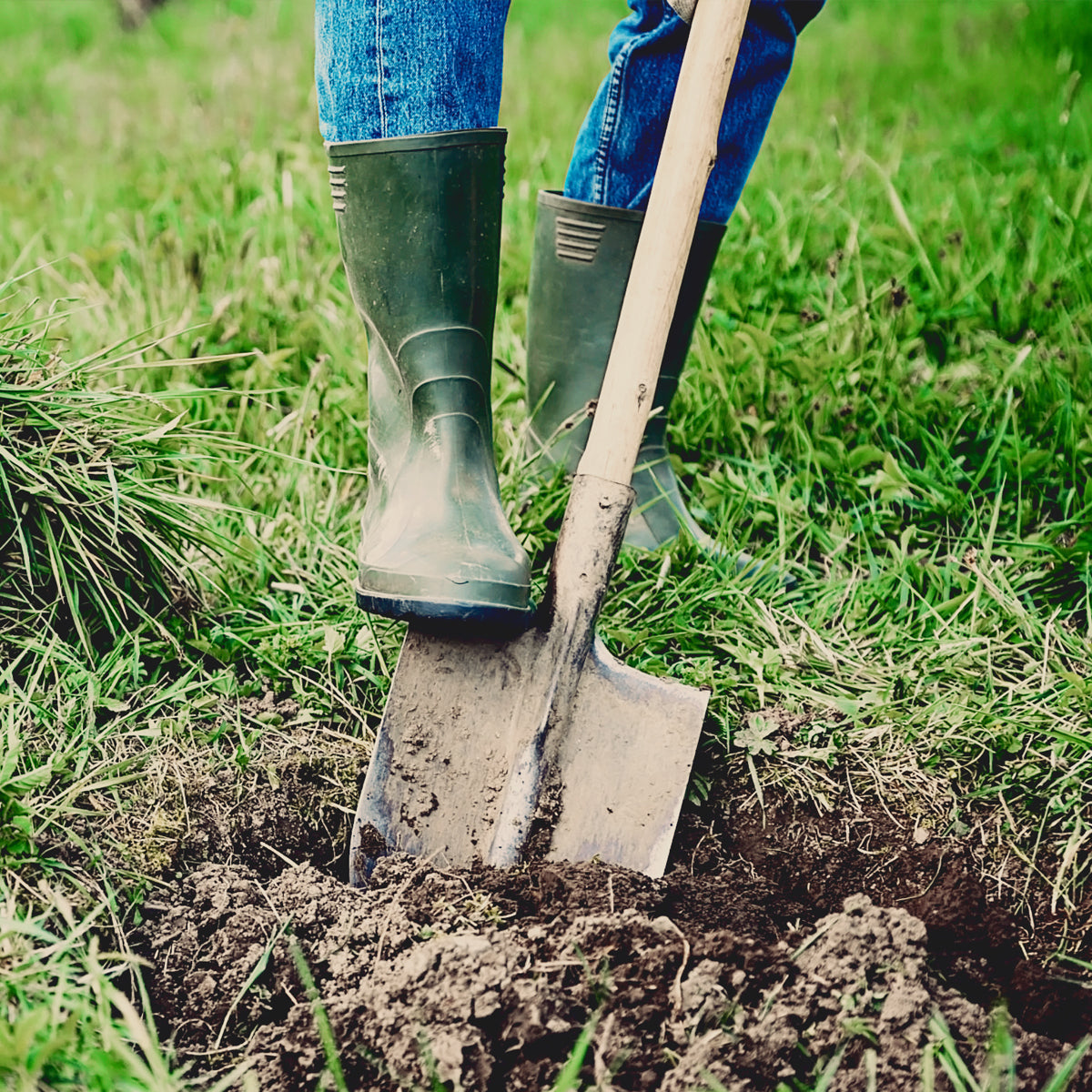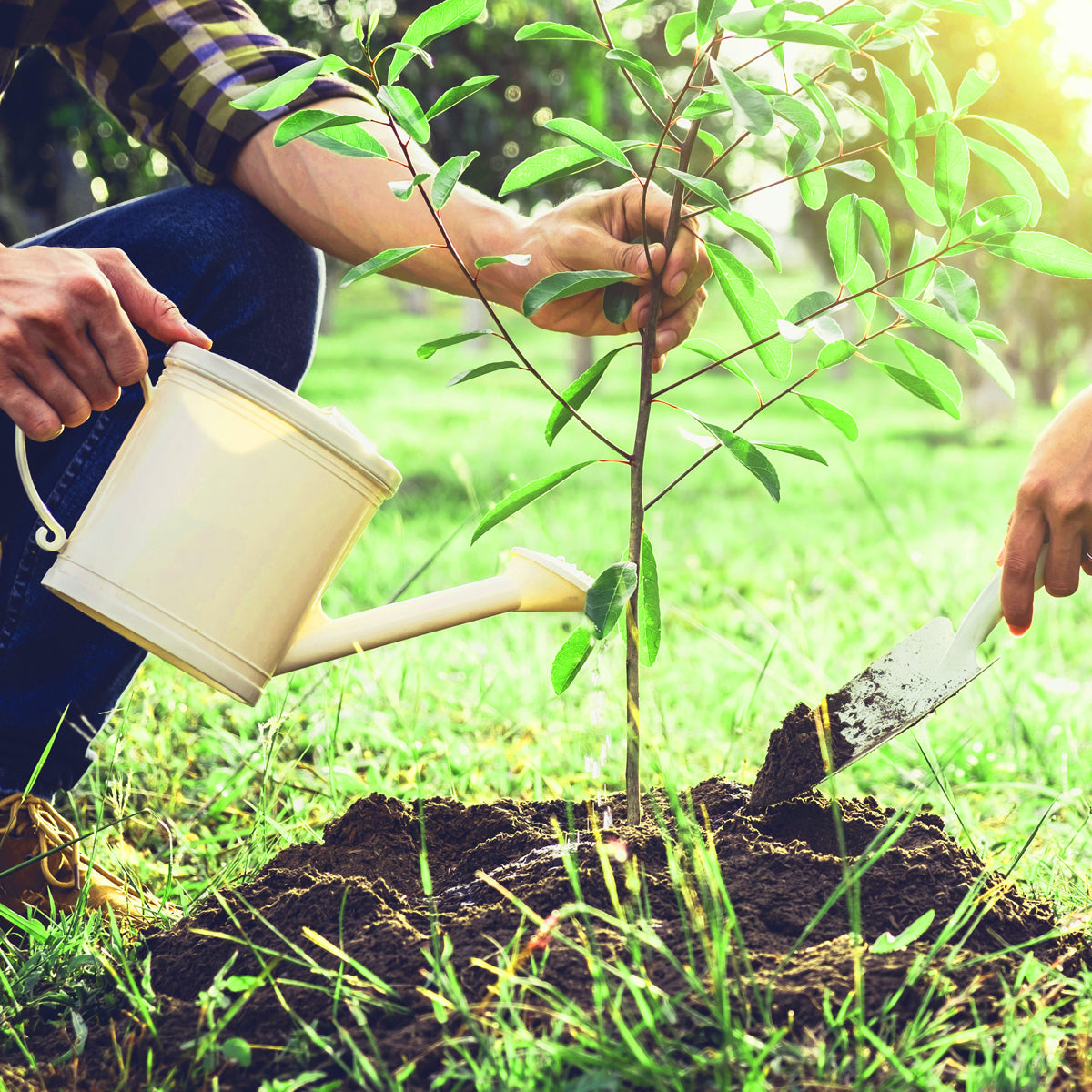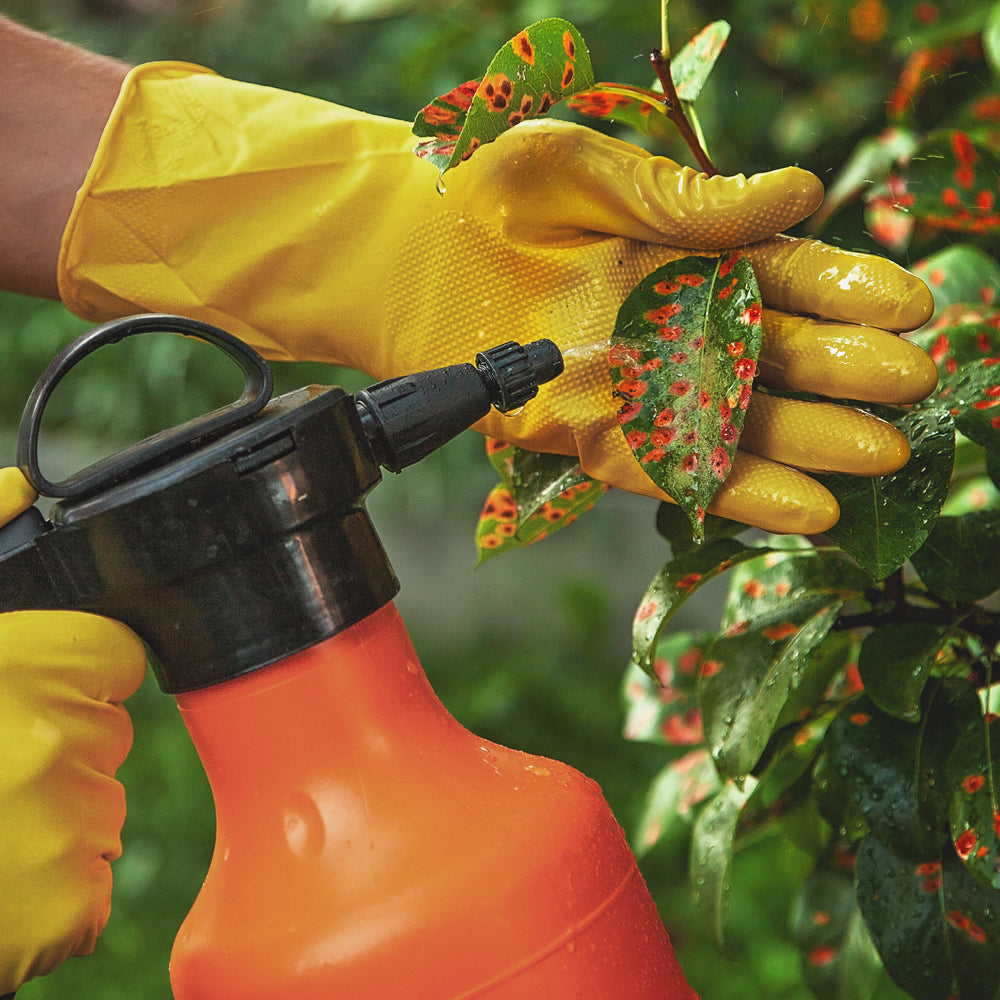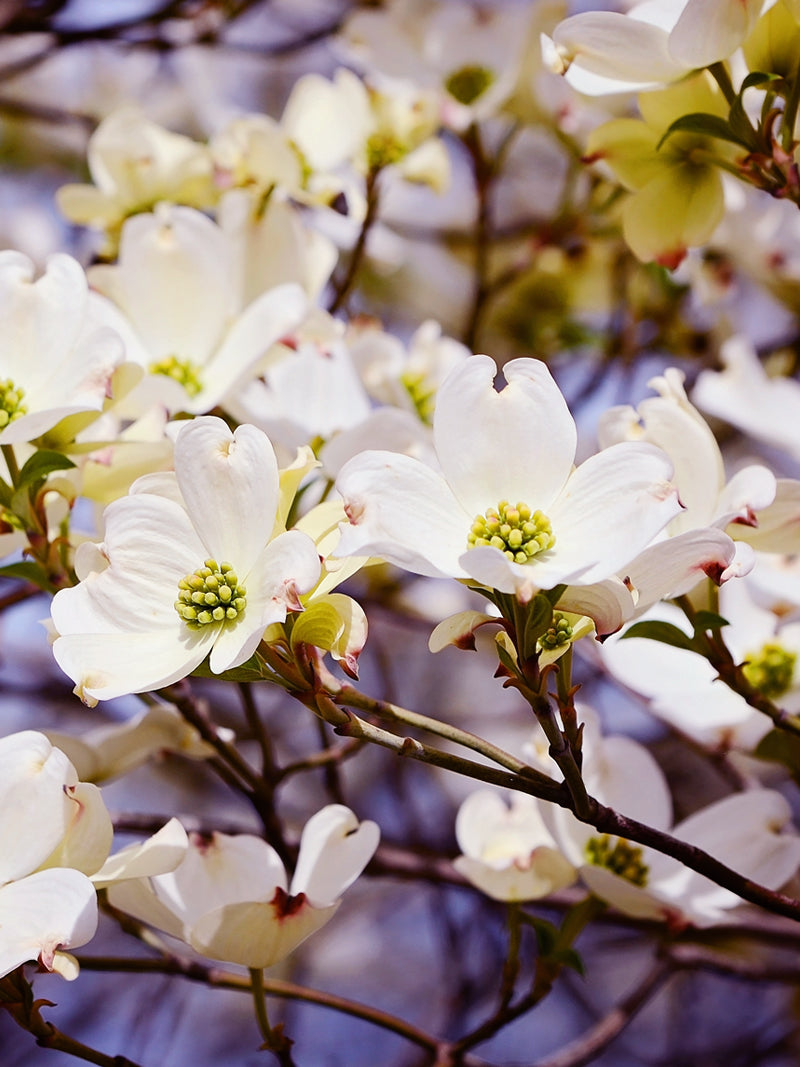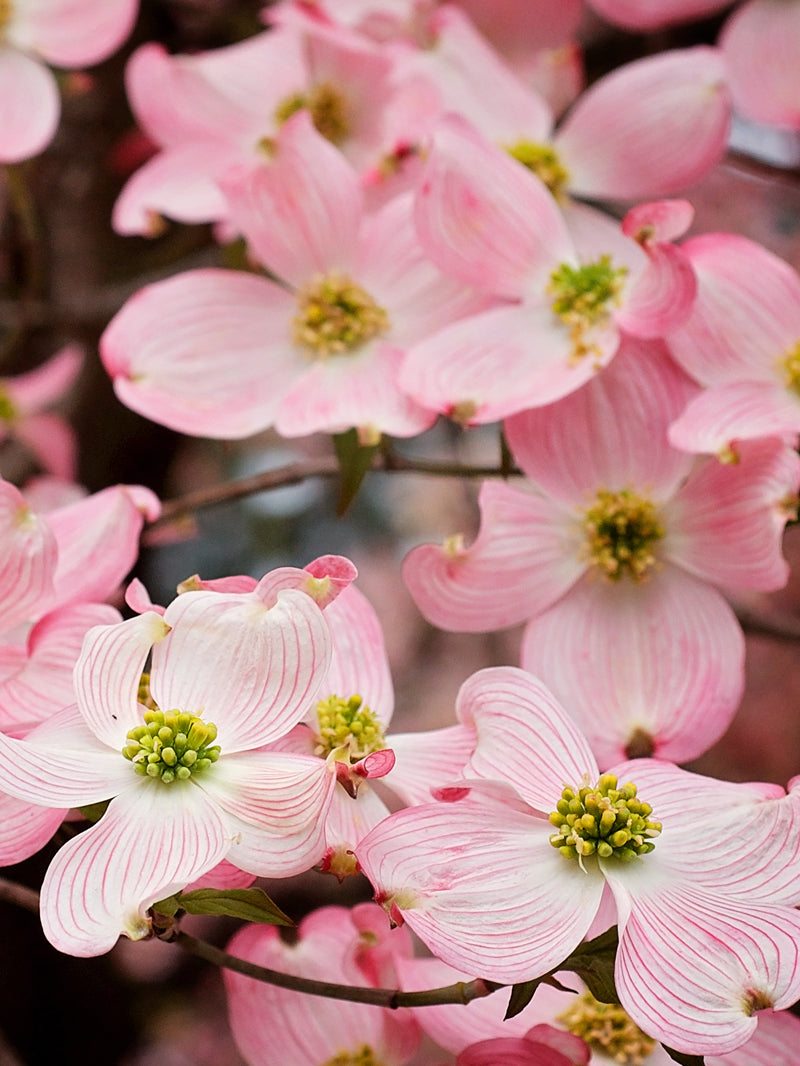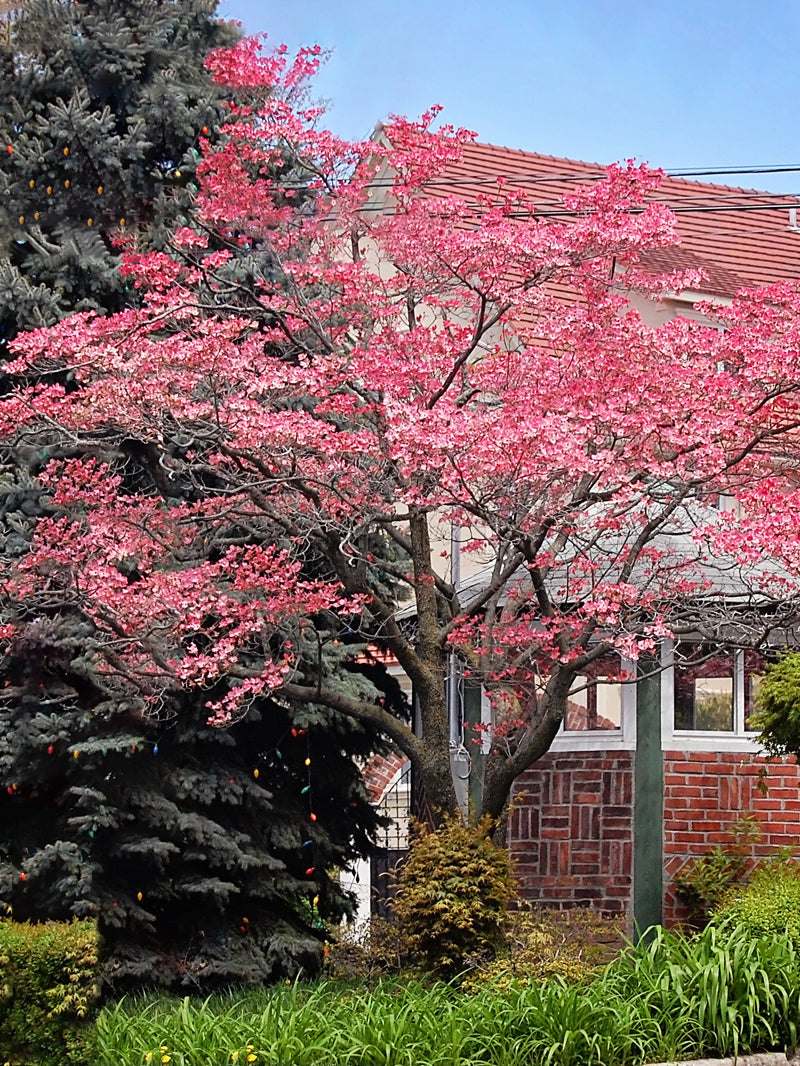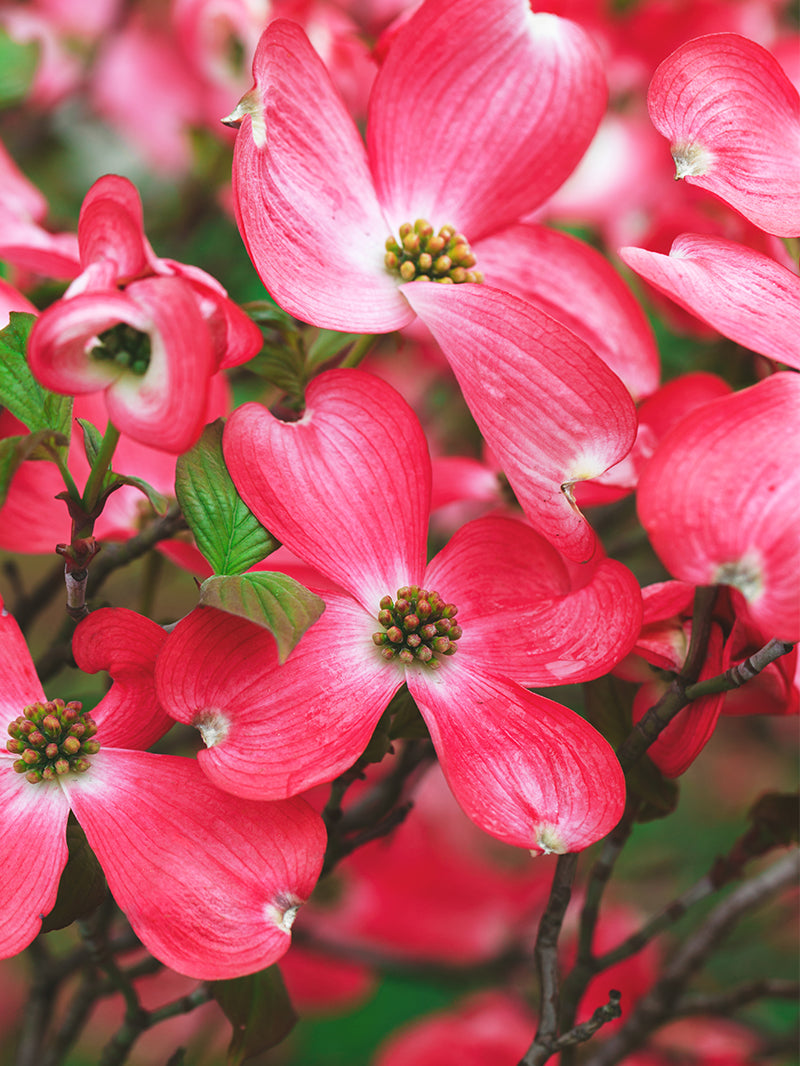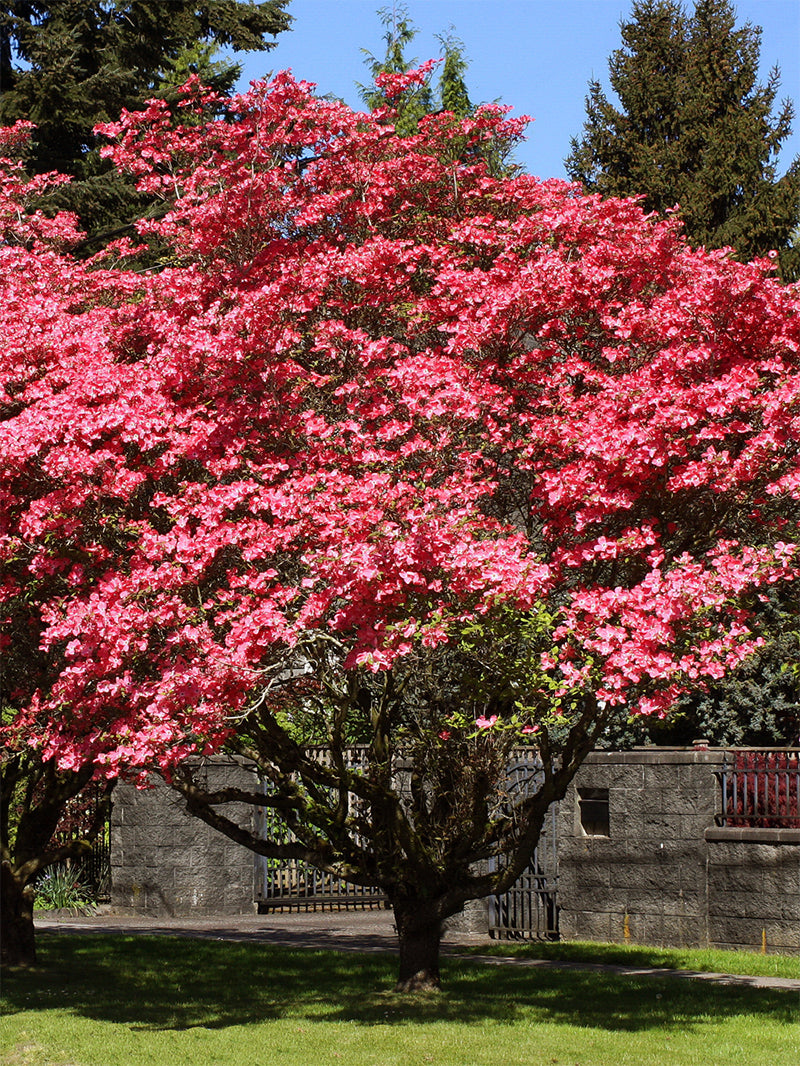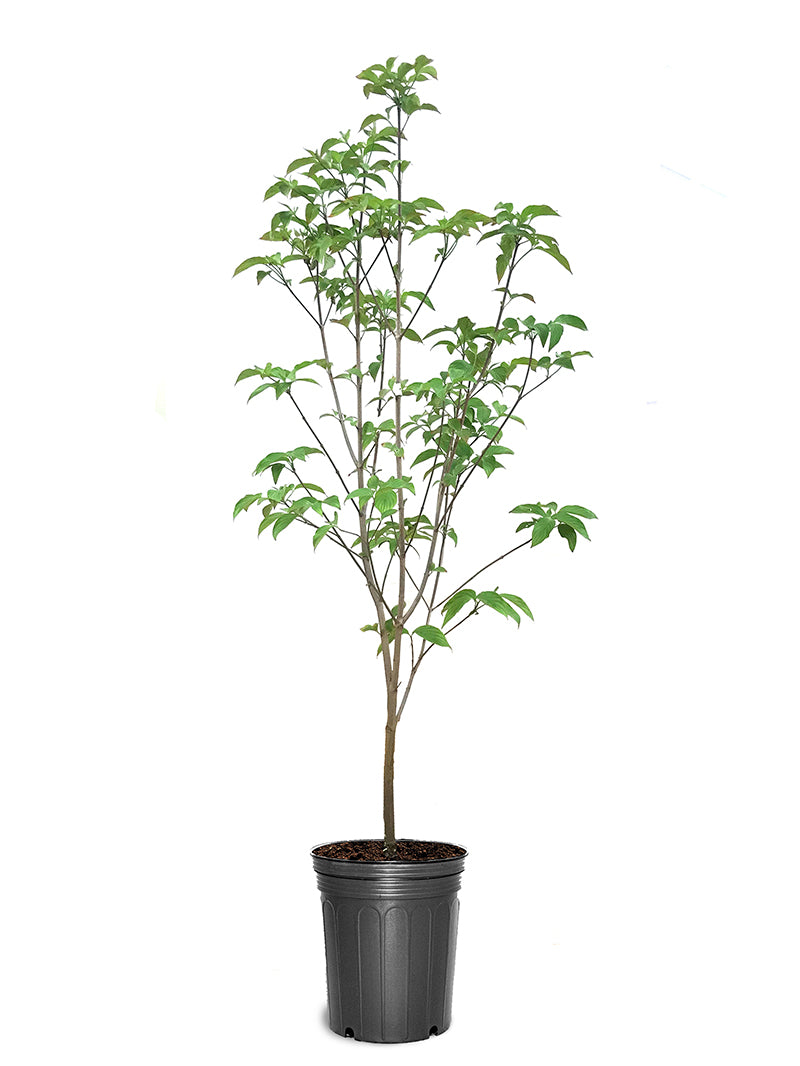
Planning your Dogwood Tree site
Flowering dogwood can be a tricky plant to grow in a landscape setting. It is commonly found growing in woodland margins. Locate flowering dogwood in a site that receives full sun to partial shade, though in the peidmont and along the coast it may need more shade, especially in the afternoon. Plant in well-drained soil that is high in organic matter and has a slightly acidic to neutral pH. A 2 to 4-inch layer of mulch will help keep the roots cool and moist in hot summers.
Soil Prep for Your Dogwood
Locate flowering dogwood in a site that receives full sun to partial shade. Ideally, they should be positioned to receive morning sun and shaded by late afternoon to avoid sweltering heat in summer. Avoid planting close to the road, as they do not tolerate salt. It is best to plant them away from sidewalks and structures because they have shallow roots. Protect them from animal browse and buck rub when young.
Plant in well-drained soil that is high in organic matter and has a slightly acidic to neutral pH. A 2 to 4-inch layer of mulch will help keep the roots cool and moist in hot summers. Optimal acidity is 5.5 to 6.0 on the pH scale. Most average garden soils fall between a pH range of 6.0 to 7.0.
A good way to find out the acidity of your soil would be to take a sample to the Cooperative Extension agent near you, for testing. You can also buy an at-home kit at most garden centers. Fertilizer should only be applied at correct times of the year. Never put fertilizer in the planting hole.
To protect your tree, please provide a 4 foot diameter weed and grass-free area. This will provide a water basin and minimize anything from taking water and nutrients from the tree. During spring and summer, 2-4 inches of mulch should be placed a few inches away from the trunk to provide good air circulation. Pine straw, pine bark, or leaves are good mulches to use around dogwoods.
Fertilizer for Dogwood Trees
Dogwoods are light feeders, however will benefit from fertilization. Fertilize dogwoods lightly in the spring once frost has passed with a well-balanced*, extended-release, acid-forming, azalea fertilizer. To avoid stimulating new growth that could be damaged by an early frost, cease fertilization two months prior to the average first frost date in your area.
*Well-balanced fertilizer— this means to look for major nutrients in the ratio of 2-1-1.
Avoid over-fertilization because it causes excess foliage growth and reduced flowering. It’s better to use too little than too much. The best time to fertilize is just before a rain. Otherwise, water in the fertilizer after application with irrigation. It is not necessary to remove mulch when fertilizing.
Be sure to evenly spread fertilizer under the entire canopy of your tree, avoiding a 5 inch area closest to the trunk. After fertilizing, be sure to water your tree. Depending on the age of your plant, application of the fertilizer should be adjusted.
WHEN TO FERTILIZE DOGWOOD TREES:
For newly planted small plants, no fertilizer is required the first year, but you may begin fertilizing next spring.
For established plants, simply broadcast the granular fertilizer in spring before new growth begins.
Once established, growth can be accelerated with light, frequent applications of fertilizer during the first three growing seasons. Fertilize established trees twice a year, in February and mid-June, if recommended by a soil test. When applying fertilizer, scatter it evenly within the 100-square-foot area surrounding the tree. Be sure to water after fertilizing.
|
10-6-8 or 10-8-8 or 10-5-4 |
Year 1: ½ cup along the perimeter of the planting hole in March, May, and July Year 2: 2 cups and broadcast it in a circle-shaped area from the tips of the canopy to 3 feet beyond the canopy in March, May and July Year 3: 4 cups and broadcast it in a circle-shaped area from the tips of the canopy to 6 feet beyond the canopy in March, May and July Year 4+: The tree should have a well-established root system and should be able to forage for nutrients on its own |
|
Espoma Holly-Tone (3-4-3) |
Year 1: 1 ½ cup along the perimeter of the planting hole in March, May, and July Year 2: 4 ½ cup and broadcast it in a circle-shaped area from the tips of the canopy to 3 feet beyond the canopy in March, May and July Year 3: 6-10 cups and broadcast it in a circle-shaped area from the tips of the canopy to 6 feet beyond the canopy in March, May and July Year 4+: The tree should have a well-established root system and should be able to forage for nutrients on its own |
Water For DOGWOOD TREES
During the first year, the tree is considered newly established, meaning it is very critical for your plant to be watered. On light/sandy soil water 2x a week, but on clay soil 1x a week will do.
Dogwoods do not tolerate extremely wet or dry soils, and should be watered deeply (1 to 2 inches per week) during dry periods, especially if located in the sun. Adequate soil moisture is important during the summer months, as C. florida is a shallow-rooted tree. These may be some of the first trees to succumb to drought injury if not mulched and watered. Good air circulation is necessary to hasten drying of leaves after rainfall and to lower the risk of disease.
When watering with an automated irrigation system it's best to set your timer to water during the early morning hours and not in the late evening or at night, which can lead to the onset of fungus and other foliar diseases. During the first few weeks after planting, check soil moisture often and adjust irrigation time if necessary to keep the soil moist, not wet.
Once the tree is established, it should receive at least one inch of water each week. After the first year you don't need to be quite as vigilant as water provided by rainfall should be adequate unless there is a period of drought.
Pruning Your Dogwood Tree
Correct pruning makes trees more attractive and healthier. Dogwoods seldom need much pruning. However, it is necessary to remove dead and injured branches, suckers, and diseased or insect-infested parts.
WHEN TO PRUNE
The time to prune a Dogwood is in late winter or early spring before the flowers emerge and the tree is still dormant. Older plants do not like to be pruned and large wounds may not close well. Train plants early in their life to develop the desired form.
HOW TO PRUNE
When pruning a large branch (2 or more inches in diameter), make three cuts (figure 5). Make the first cut under the branch about 6 to 12 inches from the trunk. The cut should go only one-third of the way through the branch. Make the second cut 1 inch beyond the first cut. Cut completely through to remove the branch. Make the third cut at the swollen branch collar to remove the remaining stub. Pruning sealers or wound dressings are of no benefit to the tree.
Note: If you're pruning to remove a diseased branch, sterilize the pruning tools by dipping them into undiluted alcohol or a solution of 10 percent bleach.
Dogwood Insect & Disease Control
Dogwoods can be severely damaged or killed by insects and diseases. Routinely check for pests throughout the year. Insects and diseases should be correctly identified and controlled with the proper method. Seek help from your Extension agent for proper pest identification and control.
Common insects on dogwoods are the dogwood borer, twig borer, and club gall. Diseases of dogwoods include powdery mildew, anthracnose, crown gall, and trunk canker.
Remember, pesticides can be dangerous if improperly used. Always follow the directions carefully, and consider all precautions indicated on the label.
NOTE: To reduce the chance of trunk damage, and thus insect and disease incidence, provide mulch beneath the canopy of dogwoods.
Shop our collection of Flowering Dogwoods and have them shipped right to your door!

